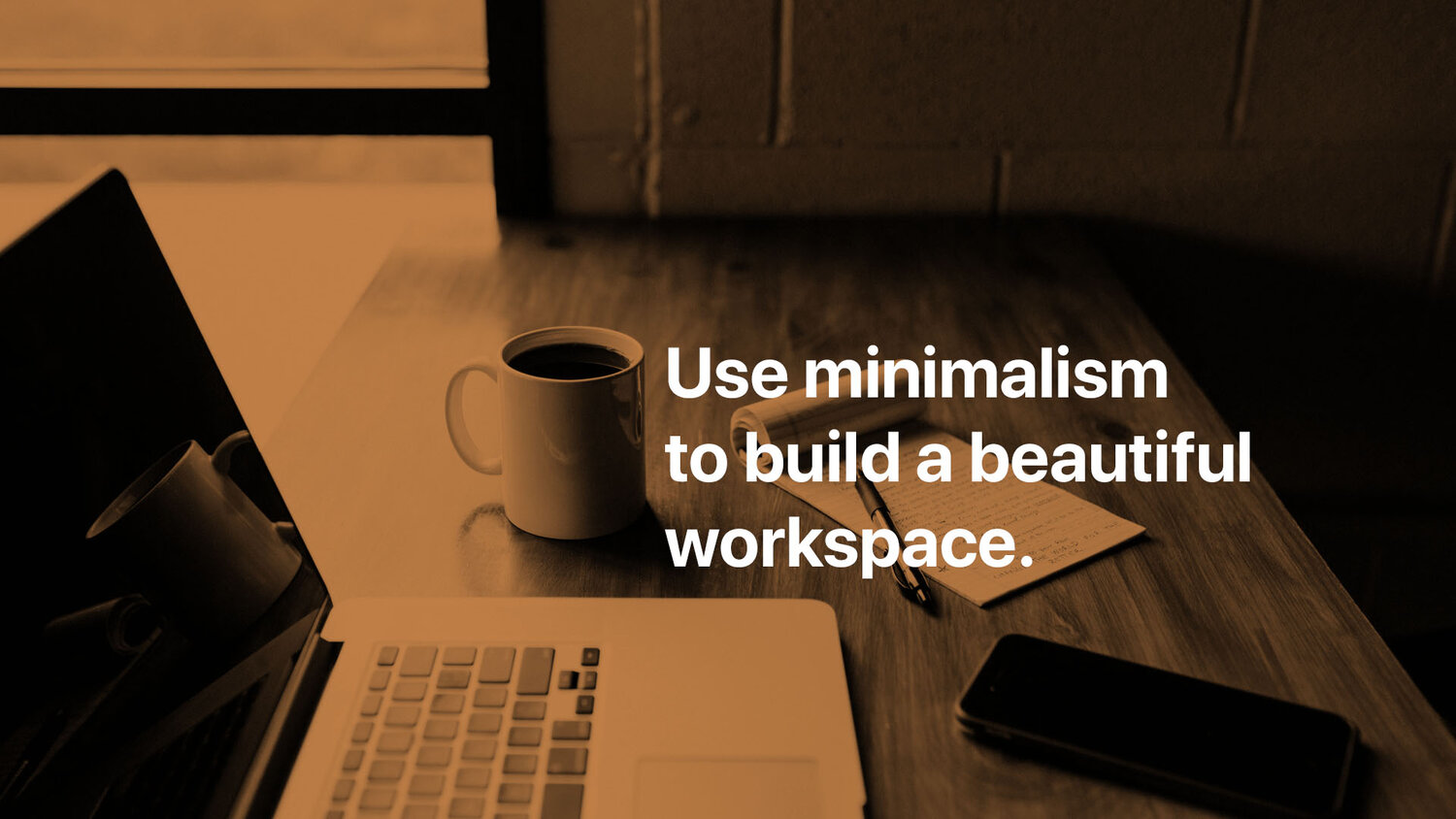
In today’s fast-paced world, the pursuit of efficiency and focus has led many professionals to explore minimalism as a means to boost productivity. Minimalism, at its core, is about simplifying one’s life by eliminating excess and concentrating on what truly matters. This philosophy can be exceptionally effective in a work environment, where clutter — both physical and mental — can hinder productivity.
The Concept of Minimalism in Workspaces

Minimalism is often associated with decluttering physical spaces to promote clarity and focus. A clean and organized workspace is essential for improving concentration and productivity. Research from Princeton University’s Neuroscience Institute suggests that constant visual reminders of disorganization drain cognitive resources and diminish focus; on the contrary, decluttering leads to better information processing and increased productivity[6].
Implementing minimalism in the workplace does not merely mean removing unnecessary items from your desk. It also encompasses creating a structured productivity system that efficiently organizes tasks, minimizes distractions, and promotes effective time management. For instance, a well-organized workspace can enhance creativity, provide emotional relief from excess, and foster a positive mood, which is crucial for maintaining motivation[4].
By concentrating on decluttering not only physical items but also digital spaces, individuals can streamline their workflows and focus their mental energy on the tasks that yield the most significant results. Simple organizational strategies, such as setting up to-do lists or using minimalist digital tools, can significantly aid in managing tasks without being overwhelmed[3].
Enhancing Focus Through Single-Tasking

Another critical aspect of minimalism is the practice of single-tasking. Unlike multitasking, which divides attention and reduces overall effectiveness, focusing on one task at a time boosts concentration and quality of work. A study highlighted in these discussions indicates that multitasking can diminish productivity by up to 40% due to the cognitive switching penalty it incurs[6]. Embracing single-tasking allows for deeper engagement with each task, which can improve performance and output quality.
Employing minimalist practices also involves prioritizing essential tasks. Selecting a limited number of significant tasks to accomplish each day can help overcome the overwhelm often associated with extensive to-do lists. Concentrating attacks on the top priorities can enhance progress on crucial goals and reduce stress[2].
Simplifying Processes for Efficiency

Regularly reviewing and simplifying work processes is essential for maximizing productivity. It’s common for job processes to become overly complex, leading to inefficiencies. By identifying areas where tasks can be simplified or automated, professionals can save time and energy. This might include utilizing digital tools that streamline communication and task management, further supporting a minimalist work environment[6][4].
Moreover, minimalism is not just about reducing physical clutter; it also involves managing commitments and simplifying routines. By minimizing the number of responsibilities one takes on, individuals can focus more on what aligns with their personal values and professional goals, ultimately enhancing their productivity[5].
Embracing Minimalist Tools and Mindset

To adopt a minimalist mindset effectively, it is essential to focus on the impact of reducing distractions. Techniques such as turning off notifications, closing unnecessary tabs, and setting specific times for checking emails can significantly enhance focus[6].
Furthermore, embracing quality over quantity when measuring success can lead to a more sustainable sense of achievement. By prioritizing meaningful tasks rather than merely checking items off a list, individuals can cultivate a more intentional and fulfilling approach to their work. Emphasizing quality output encourages a mindset where the value of completed tasks is recognized, driving more significant progress toward overarching objectives[3][4].
The Health Benefits of Minimalism

The advantages of minimalism extend beyond productivity increases; they encompass improvements in mental and physical well-being. A tidy and organized workspace can reduce symptoms of anxiety and fatigue, creating a more peaceful environment conducive to effective work. By removing unnecessary distractions and focusing on essential tasks, minimalism can help alleviate stress and enhance overall work satisfaction[2][5].
Practicing mindfulness, a key element of minimalism, fosters a heightened awareness of one’s environment and activities. This practice can lead to greater contentment and appreciation for both work and personal life, contributing positively to mental health and productivity levels[6][5].
Conclusion
Incorporating minimalism into one’s workflow can fundamentally alter how an individual approaches productivity. By simplifying workspaces and processes, focusing on single-tasking, and prioritizing quality over quantity, professionals can experience enhanced efficiency, clarity, and overall satisfaction in their work. The mental and physical benefits of adopting a minimalist lifestyle are not only conducive to higher productivity but can also lead to a more balanced and fulfilling life. As the shift towards minimalism continues to grow, the implications for productivity in the workplace are clear: less is often more.
Get more accurate answers with Super Pandi, upload files, personalized discovery feed, save searches and contribute to the PandiPedia.
Let's look at alternatives:
- Modify the query.
- Start a new thread.
- Remove sources (if manually added).